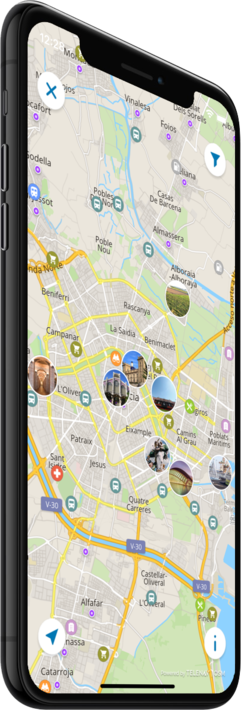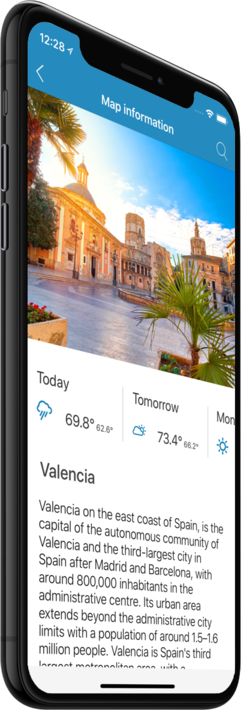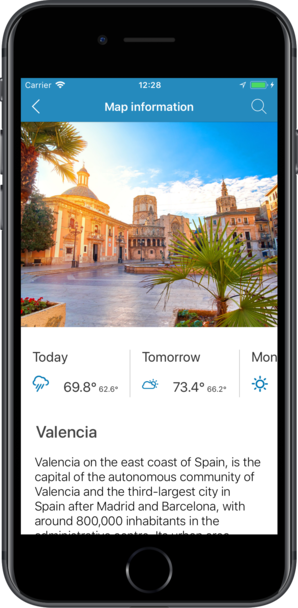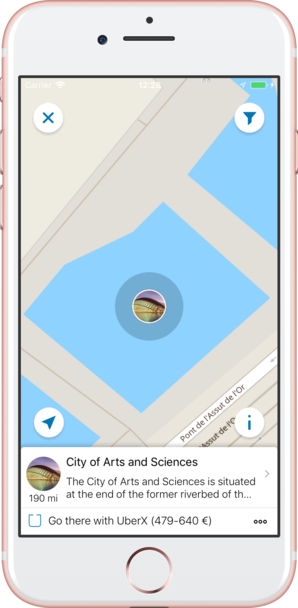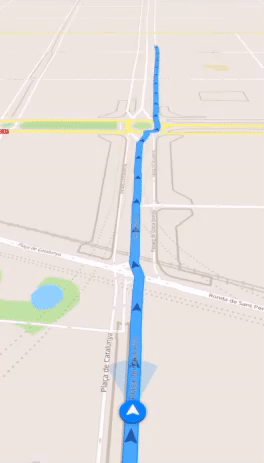Features
Turn your trip into an exciting and unforgettable experience
with the Valencia offline mobile map!
TOP DESTINATIONS
Our offline map offers you information about 24 top destinations, featuring high-quality descriptions, photos, and reviews written by real travelers.
HIGH-QUALITY CONTENT
Every location we feature comes with a description, a photo, and reviews written by real people.
SAVE ON MOBILE DATA!
All of the app’s features work offline! Simply download our completely autonomous map before your trip, and save mobile traffic!
FIND TOP DESTINATIONS NEARBY!
In addition to our featured locations, you will find tens of thousands of other useful places in our guide (hotels, restaurants, teller machines, public transport stops, points of interest, etc.)
OFFLINE NAVIGATION
Plan the best driving, walking, or biking route offline! Save your locations, so you can always easily find your way back and never get lost.
WEATHER FORECAST AND CURRENCY CONVERSION!
Latest weather forecast and a handy conversion rate calculator for 200+ different currencies!
Top places of interest
Here is a list of just a few of the places of interest that you can find on our offline map.
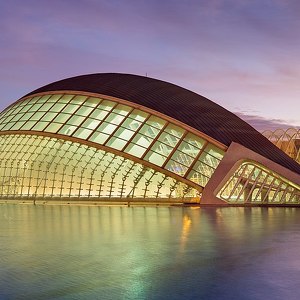
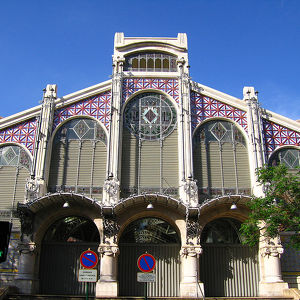
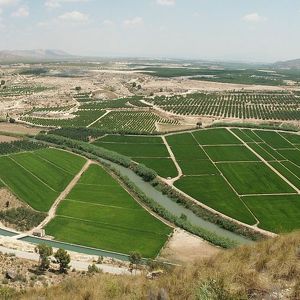
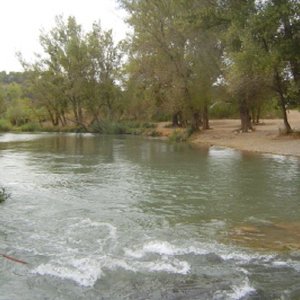
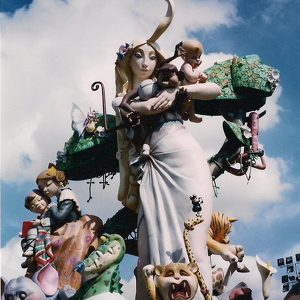
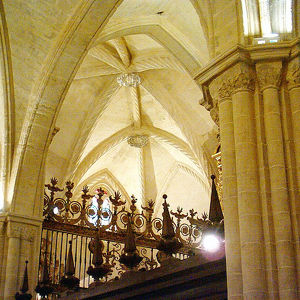
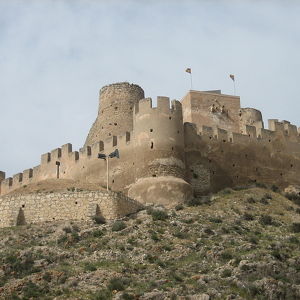
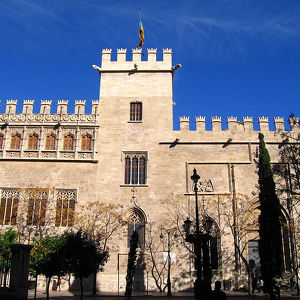
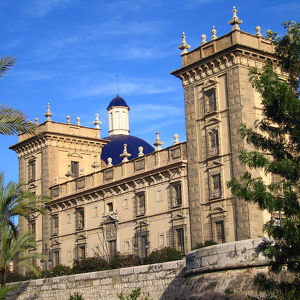
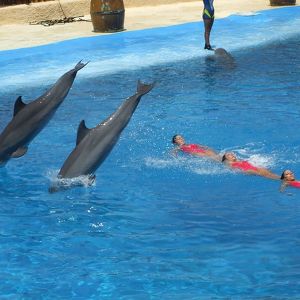
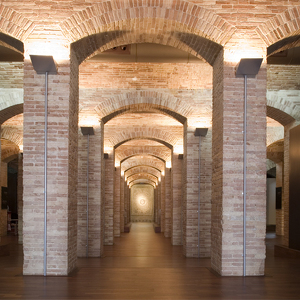
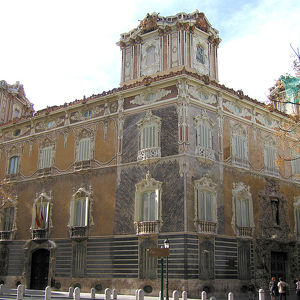
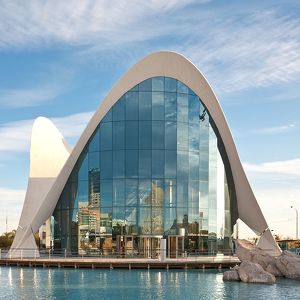
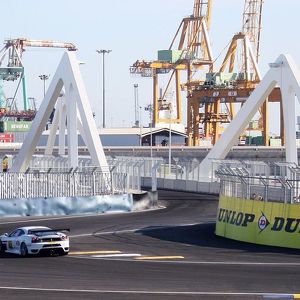
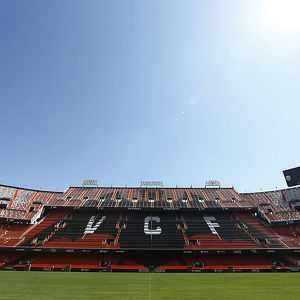
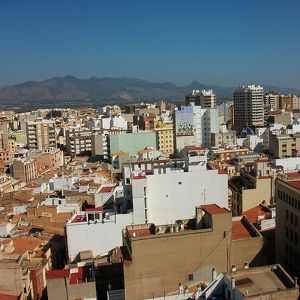
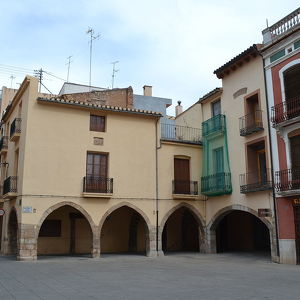
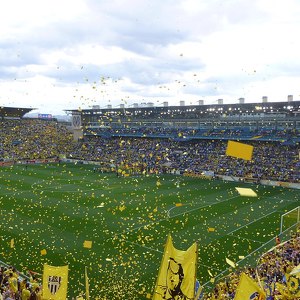
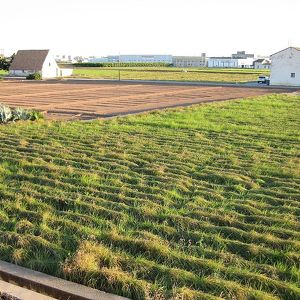
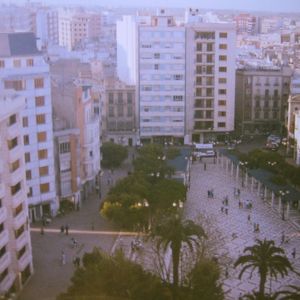
City of Arts and Sciences
The City of Arts and Sciences is situated at the end of the former riverbed of the river Turia, which was drained and rerouted after a catastrophic flood in 1957. The old riverbed was turned into a picturesque sunken park. Designed by Santiago Calat...
Mercado Central
In 1839, the spot had been used to inaugurate an open-air marketplace called Mercat Nou. By the end of the century the city of Valencia sponsored a contest for the construction of a new roofed market. A new contest in 1910 selected the present design b...
Segura
The river begins at Santiago Pontones (province of Jaén), passes Calasparra, Cieza, Murcia, Beniaján, Orihuela, Rojales and ends in the Mediterranean Sea near Guardamar del Segura in the province of Alicante. Some of its tributaries are the Mundo (whic...
Turia
The river is famous for its floods. The flood which occurred on 14 October 1957, known as the Great Flood of Valencia, flooded large part of the city of Valencia, and produced a great deal of damage to both life and property. To prevent this from happe...
Falles
Formerly, much time would be spent by the casal faller preparing the ninots (Valencian for puppets or dolls). During the four days leading up to 19 March, each group takes its ninot out for a grand parade, and then mounts it, each on its own elaborate ...
Roman Catholic Diocese of Orihuela-Alicante
The Diocese of Orihuela-Alicante (Latin: Oriolen(sis) – Lucentin(us)) is a Roman Catholic ecclesiastical territory located in the cities of Orihuela and Alicante in the Ecclesiastical province of Valencia in Spain. It was established as Diocese of Orih...
Castle of Biar
During the Muslim rule had already news but few of the fortress, which began to be relevant to the time of James I of Aragon, remain as border castle under the Treaty of Almizra. The building lost its role during the early modern period and, although r...
Llotja de la Seda
Built between 1482 and 1548, la Lonja is composed of three parts (plus the Orange Garden - a walled court-yard). The main hall, Sala de Contratacion (The Contract Hall) is a large lavishly decorated space supported by gorgeous twisted columns. This was...
Museu de Belles Arts de València
The Museu de Belles Arts de València (Valencian pronunciation: [muˈzɛw ðe ˈβeʎez ˈaɾdz de vaˈlensia]; Spanish: Museo de Bellas Artes de Valencia; English: "Museum of Fine Arts of Valencia") is an art gallery in Valencia, Spain, founded in 1913. It hous...
Mundomar
Mundomar is a marine animal park located in Benidorm, in Costa Blanca, Spain. It is twinned with the water park Aqualandia, which is directly adjacent to it, and shares the same car park. There is a viewing area at the top of Mundomar next to the Dolph...
Valencia History Museum
The Valencia History Museum (MhV) was created by agreement of the Commission of Government of the Valencia City Council on January 12, 2001. Its mission is to promote the history of the city, from its origins to the present day, using elements of the l...
González Martí National Museum of Ceramics and Decorative Arts
The palace, originally a Gothic building, was fully reshaped to Baroque in the mid-18th century, when Hipolito Rovira designed its façade, made by the Valencian sculptor Ignacio Vergara. Nowadays, as the result of several later remodelings, it combines...
L'Oceanogràfic
L'Oceanogràfic is an oceanarium situated in the east of the city of Valencia, Spain, where different marine habitats are represented. It was designed by the architect Félix Candela and the structural engineers Alberto Domingo and Carlos Lázaro. It is i...
Valencia Street Circuit
The deal to host the Valencia race was signed on June 1, 2007, and was for seven years. The deal was made between Formula One supremo Bernie Ecclestone and the Valmor Sport group, which is led by former motorcycle rider Jorge Martinez Aspar and Villarr...
Mestalla Stadium
The Estadio Mestalla was inaugurated with a friendly match on 20 May 1923 between Valencia CF and Levante UD. The new stadium had a capacity of 17,000 spectators, which was increased to 25,000 four years later. During the Civil War, the Mestalla was us...
Castellón de la Plana
The first known building in the area was the Moorish castle of Fadrell, near the Alqueries de La Plana. The town proper was officially founded in 1251, after the conquest of the Moorish Kingdom of Valencia by King James I of Aragon in 1233. James grant...
Villarreal
Both the Castilian Spanish Villarreal and Valencian Catalan Vila-real are cognates meaning 'Royal Village', due to the city's foundation by King James I of Aragon. Throughout the Middle Ages, as were most European settlements, it was officially known b...
Estadio de la Cerámica
The stadium was inaugurated on 17 June 1923 with a match between Castellón and Cervantes under the name Campo del Villarreal (Villarreal Field), becoming renamed two years later in honour to the rural lands on which it was erected. Nicknamed the Feudo ...
Alboraya
Originally a farming community, Alboraya has grown in recent decades following the development of the metropolitan area of Valencia. Better transport connections, including two stations on the Valencia metro system : Alboraia-Palmaret and Alboraia-Peri...
Alzira
Alzira is located in the province of Valencia, on the left bank of the Júcar river, and on the Valencia–Alicante railway. Alzira's climate is typically Mediterranean: warm with no extremes of temperature either in summer or winter. Rainfall is scarc...
Counter

24
TOP DESTINATIONS

402
PLACES OF INTEREST

2298
HOTELS

1782
CAFES AND RESTAURANTS
Contact us
You can get in touch with us by filling out this form
 |
 |
 |

